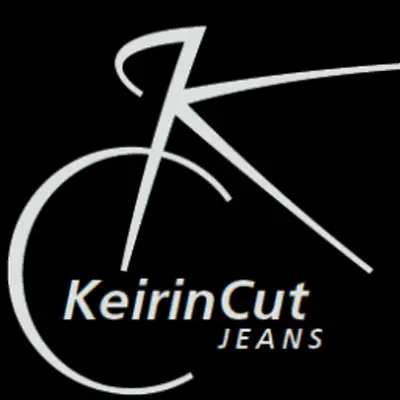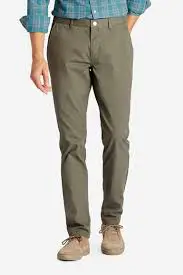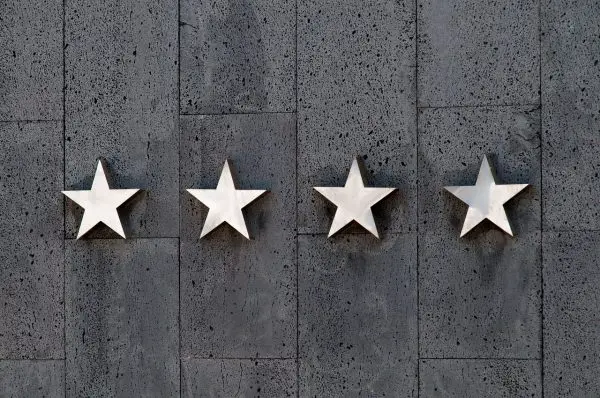THE TOP 10 BEST ATHLETIC FIT JEANS
For some people, working out is more than part of just their regular routine. They want to not only be healthy, but also to maintain a certain, more muscular physique.Body builders and athletes all do this, and maybe you do too. Who doesn’t like a well-muscled body?But when it comes to jean shopping, things can get rather difficult.Maybe you absolutely loved a pair you saw on a mannequin while perusing stores at the mall, but when you tried them on found that the legs squeezed too tightly on your things or calves.Maybe the legs fit perfect, but there was a gap in the waist that even the perfect belt couldn’t make look right. Or perhaps you bought what you hoped was the perfect pair of jeans but found that they stretched out more and more each time you wore them – until they quickly became unwearable. Don’t worry – we know the struggle is real.And we’re here to let you know that all is not lost. Some big name brands have recognized your jean fitting needs and have created a fit especially for you: the athletic fit.
COMPARISON TABLE
|
NAME |
IMAGE |
PRICE |
|---|---|---|
|
BARBELL APPAREL |
[amazon fields=”B01M2681OK” value=”thumb” ] |
|
|
KEIRIN CUT JEANS |
 |
|
|
LEVI’S |
[amazon fields=”B01N5FVM36″ value=”thumb” ] |
|
|
GAP |
[amazon fields=”B07GBJX8YF” value=”thumb” ] |
|
|
BONOBOS |
 |
|
|
LEE |
[amazon fields=”B01DXPYIHO” value=”thumb” image_size=”large” /] |
HOW WE CHOOSE OUR RATINGS

We’re dedicated to helping you in your search for the best pair of athletic jeans. When compiling this list, we took a look at brand ratings as well as customer comments on a variety of the jeans they sell.We also took into consideration that you might be looking to save a buck or two, so we made sure to find quality jeans for under $$$.What do we mean when we say quality?We mean durable, comfortable, and great looking athletic jeans that you will get the most for your money with.
TEN GREAT ATHLETIC FIT JEANS BY SIX QUALITY BRANDS
Whether you’re an athlete, bodybuilder, or just someone who possesses larger leg musculature, athletic jeans are the answer to your jean purchasing prayers.They are made to hug your waist and backend while still giving you plenty of leg room without being too tight. They have just enough stretch to conform to your figure comfortably, but won’t become baggy after just a few wears.And best of all, some big name brands you’ve heard your friends raving about carry them. Here are our top ten picks for best athletic fit jeans sorted by brand:
1. BARBELL APPAREL
[amazon box=”B01M2681OK” /]
Started by a group of athletes and friends as a Kickstarter campaign, Barbell has quickly become a beloved brand for athletic jeans! Customers give very high praise to Barbell’s jeans, rating them high in comfort, durability, and the brand’s overall customer service.What’s even more appealing about Barbell is that they cater to both men and women. All of their athletic fit jeans are $$$, so say goodbye to gender or size inequality in pricing.Need more than our word? See for yourself with their Straight Athletic Fit jeans. Their highest ranking jeans for men, these come in 8 different washes.Their special denim blend allows for full mobility and comfort regardless of what activity you’re doing while you wear them. Customers even felt that they could work out while wearing them without a problem.If you prefer a little more leg room, however, Barbell also carries these Relaxed Athletic Fit jeans. They come in 6 washes and have all of the same great qualities that customers love about their straight athletic fit counterparts.Yes, we remember that we mentioned Barbell selling athletic fit jeans for the ladies. Like the men’s selection, they have two styles: Slim Athletic Fit skinny jeans and Boot Cut, both available in multiple washes.If you love skinny jeans, but worry that you’ll have trouble finding a size you can comfortably get in and out of, give Barbell a chance.Customers reviewed their Slim Athletic Fit jeans as being form-fitting without the eternal struggle of finding creative ways to get them on and off without a fight.Providing quality athletic jeans to men and women alike as well as outstanding customer service and satisfaction puts Barbell at the top of our list with 5 out of 5 stars.
2. KEIRIN CUT JEANS

Another brand that started as a Kickstarter campaign by athletes for those with athletic builds, Keirin Cut does business in a very unique way – they tailor their jeans based on customer feedback and suggestion.Keirin Cut takes their customers’ surveys, reviews, and emails, then designs fabrics based on what customers want during a pre-order period.Customers can then order what style they want in their size. Keirin Cut will create the jeans and ship them out to the customer (for free within the United States). What’s even more impressive is that Keirin Cut responds to customer reviews and engages them when they make suggestions or express a concern over any aspect of their products, including complaints like pocket depth.Keirin Cut’s Carson Men’s Athletic Fit Jeans are their highest rated jeans currently available on their website. At $$$, these are praised as being both comfortable and durable by customers. They are relaxed fit and just stretchy enough to conform to your movements without constriction. They also offer plenty of lower leg room without sacrificing a great fit in the seat and thighs.For the ladies, might we suggest the Fiorenzuola Straight Leg Athletic Fit Jeans?As with the Carson Men’s Jeans, the Fiorenzuola Women’s Jeans fit snug or loosely in the appropriate places. They are rated as being the perfect fit!We grant Keirin Cut Jeans and their athletic fit jeans 4.5 out of 5 stars for quality products and their customer-centric way of doing business.
3. LEVI’S
[amazon box=”B01N5FVM36″ /]
A tried and true customer favorite, you can’t go wrong with a good pair of Levi’s jeans. Levi’s is available in many different brick and mortar stores as well as online.They’ve been around for a long time and customers love them. They offer a variety of jeans in a wide variety of colors and sizes, including Big and Tall.Prices are very reasonable, averaging between $$ and $$$. Despite having lower prices than our top two picks, we place them third on this list due to not carrying any athletic fit jeans for women.For your athletic fit needs, we recommend Levi’s 541 Athletic Fit Stretch Jeans. Available in 9 wash colors, they are a staple in any man’s closet. Customers love the fit and comfort these jeans grant them. They stretch to allow for full range of motion while maintaining enough cling so as not to be baggy. They sit at the waist and cost $$.With so many positive customer reviews and being such a long-standing beloved jean company, we give Levi’s and their 541 Athletic Fit Stretch Jeans 4 out of 5 stars.
4. GAP
[amazon box=”B07GBJX8YF” /]
Another highly recognized name in the clothing world, people swear by Gap jeans. They find them to be consistently reliable and affordable. You can shop in their physical stores or online depending on your clothes shopping preference. Customer loyalty is strong with these guys.The only downside to Gap? No athletic fit jeans for the ladies.Jeans in Athletic Fit with GapFlex are not only their highest rated athletic jeans, but they are also made with the environment in mind. Gap prides itself on saving tons of water and cutting the amount of energy use while still creating high quality athletic jeans for men.What is GapFlex? This their home-made brand of stretch technology that allows their jeans to move with you without sacrificing durability or style. They sit on your lower waist and cost $$.Jeans in Athletic Fit with GapFlex receive 4 out of 5 stars for price, durability, and style.
5. BONOBOS

Bonobos started online to create a faster, easier shopping experience for men who couldn’t find their perfect pair of pants. They now have over 30 stores (they call them “Guideshops”) all over the United States. They boast being the biggest clothing brand to be built on the internet in the United States. Their prices vary depending on the style of jeans you’re looking to purchase. All of their styles come in athletic fit, so you’ll have more options while you hunt for a pair that suits you in every way.We suggest looking at Bonobos’ style called “The Blue Jean.” These are classical blue jeans that come in four fits, including athletic. You can choose from 8 different washes. They also have Bonobos’ special curved waistband that was designed with comfort and reliability in mind. The curved waistband was made to fit the natural shape of your waist regardless of what that shape might be. These jeans are mid-rise and cut to be flattering on your form without restricting your movements. “The Blue Jean” style jeans in athletic fit cost $$$.While a little higher in price, we feel that Bonobos’ “The Blue Jean” jeans deserve 4 out of 5 stars.
6. LEE
[amazon box=”B01DXPYIHO” /]
Lee might not seem to carry the same weight as some of our other brands do, but we assure you that you or someone close to you may have owned a pair of their jeans at some point.Like Levi’s, you’ll find Lee jeans in all sorts of stores both physical and online. Their jeans are durable and comfortable without costing you too much money. In fact, they are the least expensive jeans on our list. But like our former two brands, they do not offer jeans in athletic fit for women.Lee’s Extreme Motion Athletic Tapered Leg Jeans are highly rated customer favorite athletic fit jeans for men. You don’t have to worry about being off trend with these – their straight leg and tapered bottom style keeps you in fashion while still being comfortable.The waistband is designed to stretch to flex with you as you move. They come in 5 colors and are made with fabrics that can withstand any trial you put them through. Best of all, they’re only $$ at regular price.If you’re looking to save some money while still getting a pair of athletic jeans that you can wear without worry, Lee’s Extreme Motion Athletic Jeans are your best bet.With overall positive customer feedback, we give them 3.5 out of 5 stars.
OBTAIN THE BEST PAIR OF ATHLETIC FIT JEANS FOR YOU
What it all boils down to when it comes to shopping for the perfect pair of athletic fit jeans is personal style preference paired with durability, affordability, and comfort.You want a pair that will fit your unique body type and flatter your muscles, but won’t tear or become stretched out while you do what you need to.With this list as your guide, you can finally obtain the best pair of athletic jeans for you.
BUYER’S GUIDE
Like the list, but want to shop around some more? Allow us to offer some advice on how to go about doing that. Whether you shop online or in-store, we want you to go in feeling confident and prepared.If you’re shopping online, pay close attention to customer ratings and read the product descriptions thoroughly. Many websites will also provide guides to help you find the perfect size and style of athletic fit jean within their inventory. It is important to read these and any sizing charts provided, especially if you’re not sure of what your size is. Also keep in mind that different styles and fabrics might affect how the jeans will fit you.We highly encourage you to try on your athletic jeans before you purchase them when you’re in the store. Try not to shop in a hurry. Take your time and try on multiple pairs. Rome wasn’t built in a day and finding the perfect pair of jeans won’t happen on the first try. Shop around and try many different brands, styles, and colors.Finally, we encourage you to ask your friends and family what brands of jeans they swear by. Nothing beats first-hand accounts. With verbal reviews from people you trust, you know you’re getting a genuine review of the athletic fit jeans you’re considering purchasing.Good luck and happy hunting!
DENIM and PATCHES sourced this post originally published on this site





















